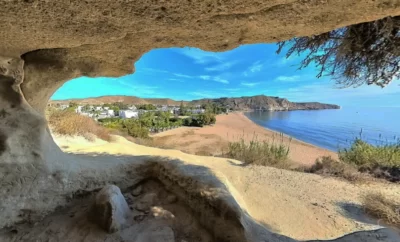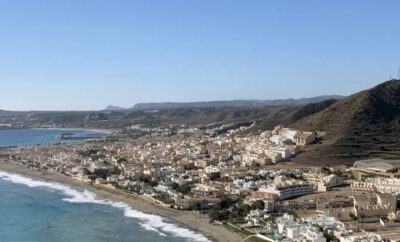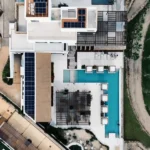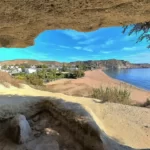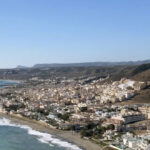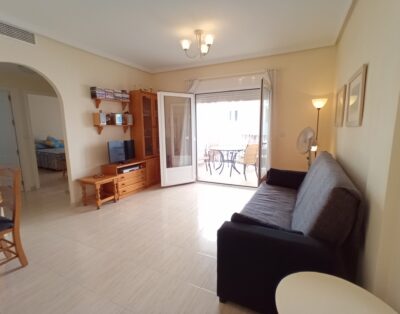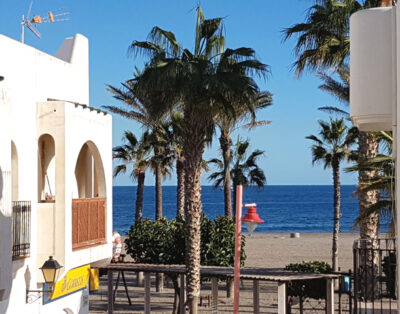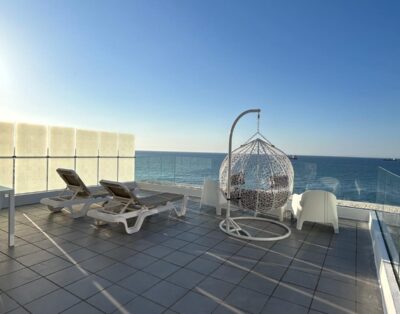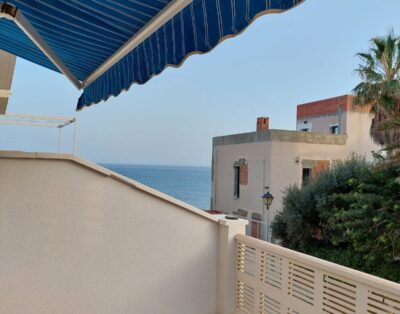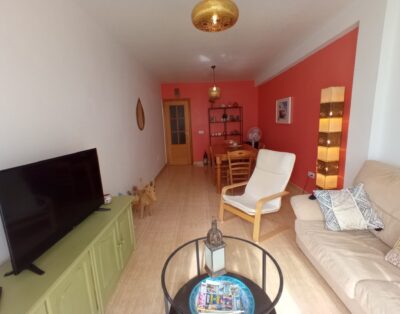Beaches and amazing places in Carboneras
Carboneras is a town in the province of Almeria, in Andalusia (Spain) with 7500 inhabitants. It covers an area of 95 km² with a population density of 76.5 inhabitants/km².
The village is located 10 metres above sea level and 60 km from the capital: Almeria. It is famous for its seawater desalinization plant, the largest in Europe, and for its Moors and Christians festivals.
Carboneras has 5 beaches from where we can see the island of San Andres: a small rocky island of 1.5 hectares, which looks like a whale.
At the mouth of the river Alias, the Cabo de Gata-Níjar Natural Park begins, where you can visit many unspoilt beaches, including the fabulous Los Muertos beach or the 3 km long Algarrobico beach, where the film “Lawrence of Arabia” has been made.
History
The coast of Carboneras was given to the Marquis of Carpio by Felipe II as part of the jurisdiction of the fief of Sorbas in the year 1559.
Near the coast there was an abundance of wood and coal ovens were built which were later sold inland on the peninsula. This area took the name of Cabezo de la Carbonera. Its isolated position made contraband rife, a circumstance taken full advantage of by the Moors to establish connections with Africa, especially during the uprising of 1568. It was an important port during this uprising for the entry of soldiers and arms.
It is known that during the nazari era, the occupation of the coast was carried out through the establishment of towers and observation posts along the shore. This vigilance continued after the conquest of the Catholic Monarchs. The settlement of the village never took shape because of the isolation of the zone and the inherent danger due to the Berber pirates. A better defence was planned by means of the establishment of permanent troops and the construction of a castle. Although the project was approved by Felipe II in the year 1583, it was not carried out until 1621. The distribution of land to the soldiers, the creation of a tunny fishery and the improved safety of the zone attracted the population and a permanent village sprang up around Saint Andrew’s Castle, which was the name given to the castle built. In 1688 the castle passed over to the Casa de Alba.
Since the beginning of the XVIII century, its population was considerably increased, among other factors, by the growing safety of the Spanish coast. In 1776 another castle in Mesa Roldan was commissioned to be built. This increased the security of the area and as a consequence its economic prosperity. Its economy was based on traditional agriculture, fishing, esparto and exploitation of the saltwort plant.
In 1813 it obtained its independence as a village from Sorbas. Throughout the century the population grew until the beginning of the XX century when a steady fall began due to emigration, up until the seventies.
Currently, it is a dynamic village which, together with its traditional economic activity, has established itself as an industrial centre, producing energy and cement. Also worth mentioning; the development of its service sector, the port activity and the expansion of tourism.
Parc naturel de Cabo de Gata
The Cabo de Gata Natural Park covers 29,000 hectares in the western part of the Gulf of Almeria. It extends from east to west, from the Algarrobico beach to the Rambla del Agua de Retamar. The “Cabo de Gata” mountains, originally volcanic, offer the most spectacular geological formations in Andalusia: craters, basalt columns, fossilised rocks.
The Cabo de Gata-Níjar Natural Park was the first protected maritime-terrestrial area in Andalusia. It has been declared a natural park in 1987. Due to the contrasts between the marine, coastal and terrestrial environments, the numerous exclusive species it shelters and the characteristics of one of the most arid ecosystems in Europe, this area was also internationally recognised by UNESCO as a “biosphere reserve” and World Geopark in 1997. The average temperature is 17.5°C (25°C in July, August and September), one of the highest on the peninsula. Its crystal clear waters are the most beautiful in the Mediterranean, with an average visibility of 16 metres.
The Cabo de Gata-Níjar Park offers 50 kilometres of coastline and the best preserved cliffs on the European Mediterranean coast. It includes urban beaches such as San José or Agua Amarga and beautiful natural beaches such as Mónsul or Los Genoveses.
Arts and Crafts
Welcome to the land of ceramics (handmade or industrial) and jarapas (plain or coloured cotton tapestries). Níjar is a good place to shop for these items. This village has many shops selling local handicrafts: Crockery, leather bags, clothing…
Weather forecast
| Fri | Sat | Sun | Mon | Tue | Wed |
| +73° | +68° | +69° | +62° | +63° | +61° |
| +65° | +63° | +60° | +56° | +55° | +55° |






